An Analysis Of RESTEasy Core Classes
An Analysis Of RESTEasy Core Classes
RESTEasy has some embedded containers, such as the Netty container, the Sun JDK HTTP Server container, and the Undertow container. For each container, their basic requirement is to initialize the RESTEasy core classes properly so RESTEasy can provide resource classes and URL to method matching properly. In this article, I’d like to show you my researches on RESTEasy core classes.
Here is the class diagram that shows the core classes of RESTEasy:
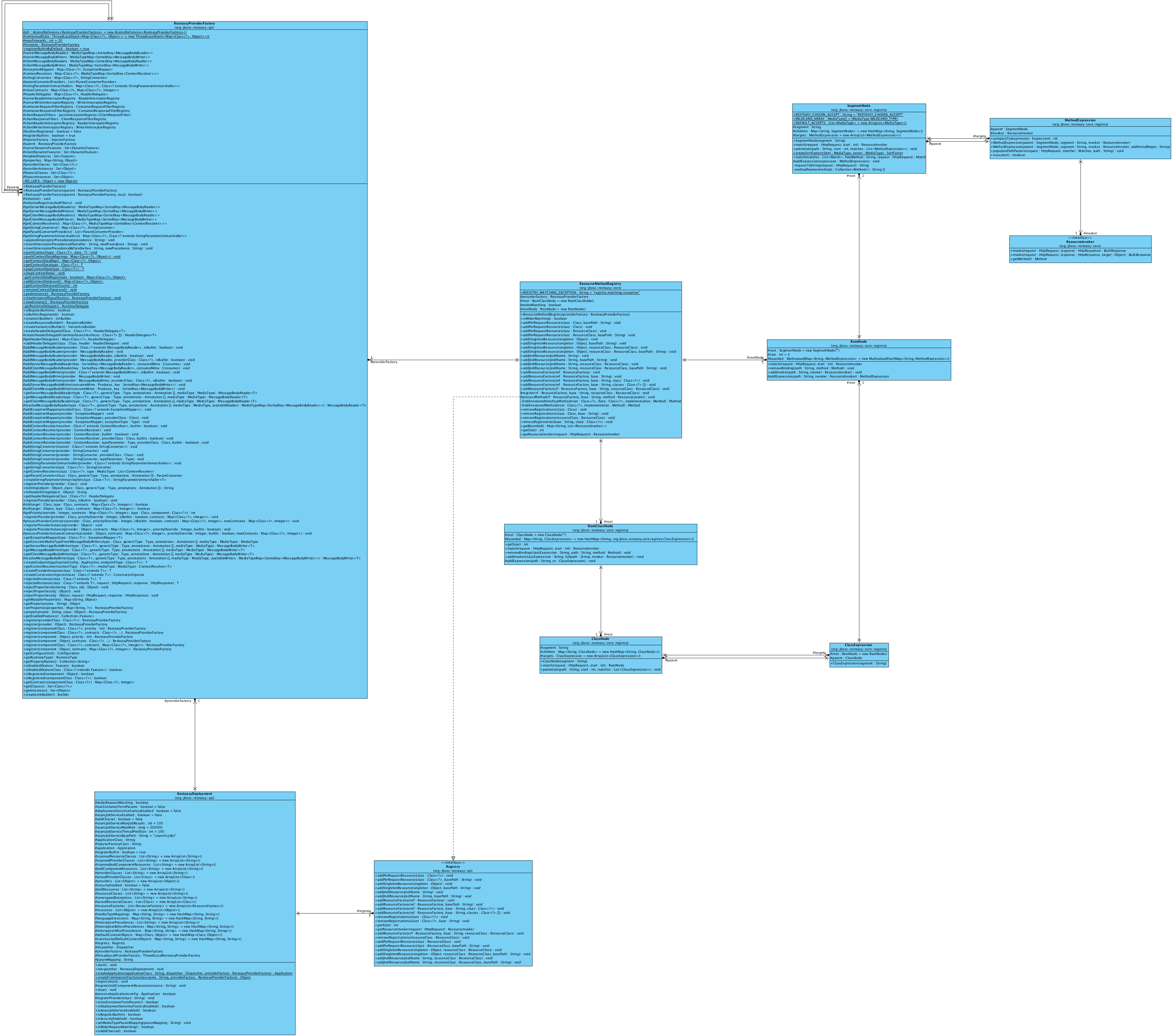
As the diagram shown above, there are three core classes that forms the RESTEasy basic structure: ReseteasyDeployment, ResteasyProviderFactory, and ResourceMethodRegistry. I have written RESTEasy Implementation of JAX-RS SPEC 2.0 Section 3.7.1(abbreviated as [sec3.7] in this article) to explain the design of ResourceMethodRegistry and the following URL matching classes. You may want to check the article for more details on RESTEasy implementation of URL matching process and method invoking process.
Now let’s check the ReseteasyDeployment class. This is the basic container of the RESTEasy, and it contains ResteasyProviderFactory and ResourceMethodRegistry classes. The ResteasyProviderFactory contains many basic data that will be used during RESTEasy runtime. You can see from the diagram it is a very big class that contains a lot of data. For example, it contains multiple MessageReader classes, MessageWriter classes, Filter classes and Interceptor classes.
We can see from the diagram that ResourceMethodRegistry uses the ResteasyProviderFactory. The following sequence diagram shows the ResourceMethodRegistry.processMethod() method call process and its usage of ResteasyProviderFactory and other core classes:
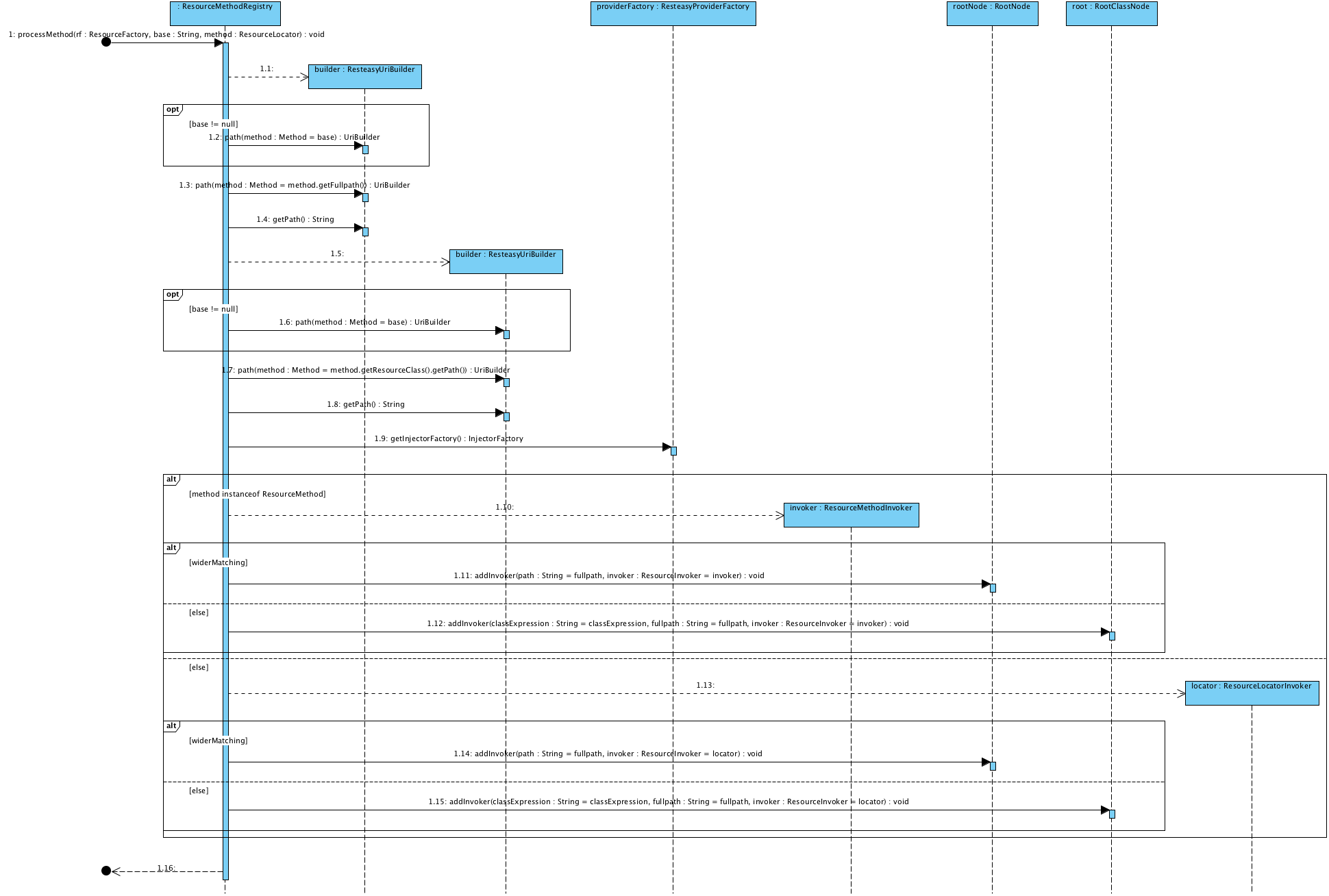
From the above diagram, we can see how does ResourceMethodRegistry coordinating various components to form a RESTEasy container for dealing with requests. We can see the info is fetched from ResteasyProviderFactory, and we can see ResourceMethodInvoker and ResourceLocatorInvoker are added into multiple Node classes. In this way, the Node classes with its Invoker classes can be used for later requests matching and processing work. For more details on this part, you can refer to the [sec3.7].
Now we should check the ResteasyDeployment start process. The ResteasyDeployment.start() method is the initialization method of the RESTEasy container. Here is the sequence diagram of the method:
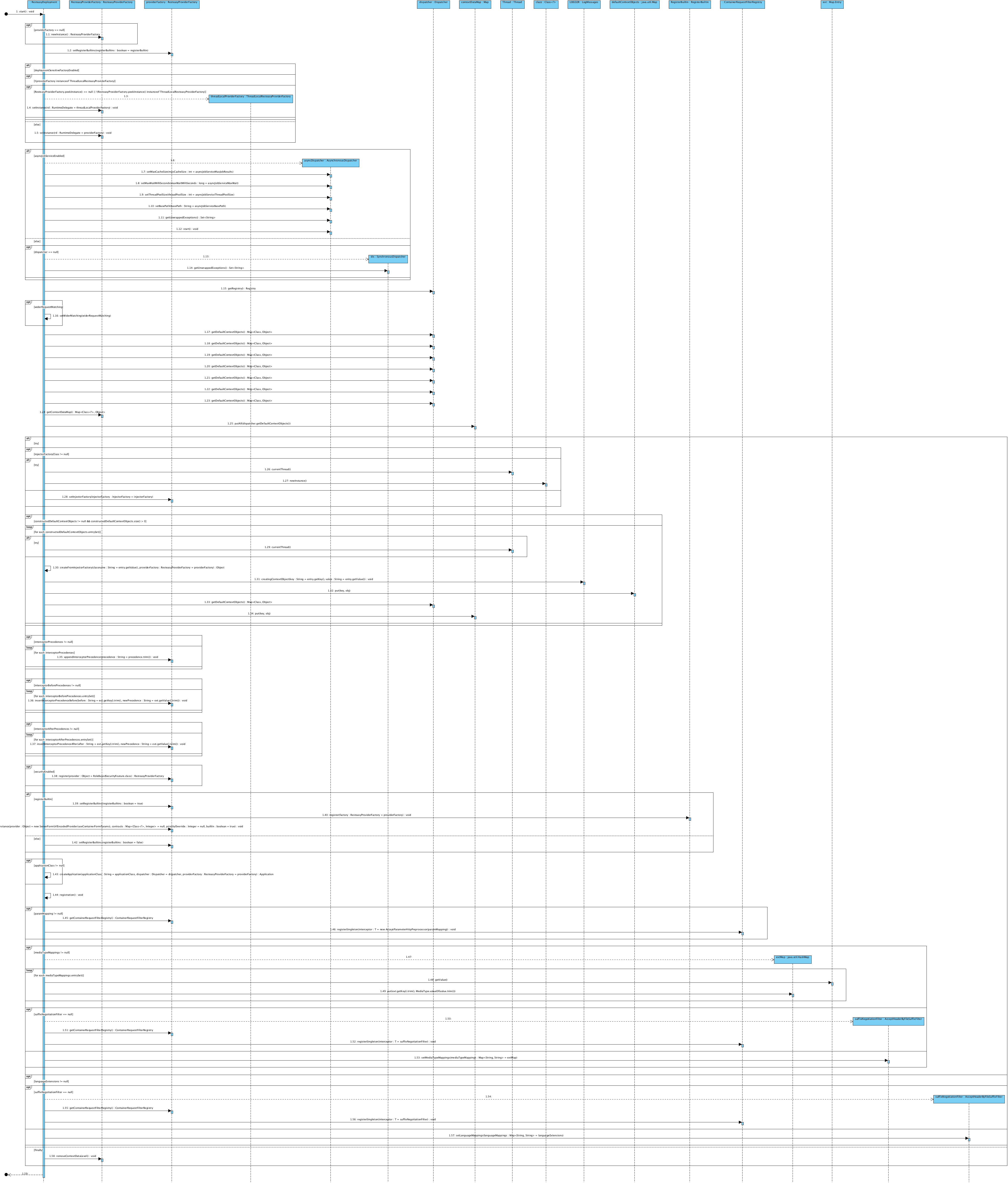
From the above diagram, we can see ResteasyDeployment.start() method will create and initialize ResteasyProviderFactory. In addition, it will initialize multiple dispatcher classes. In addition, we can see Step 1.44 is a call to registration(). This method is to add providers into ResteasyProviderFactory, and to add resource classes into ResourceMethodRegistry. Here is the sequence diagram of the registration method:
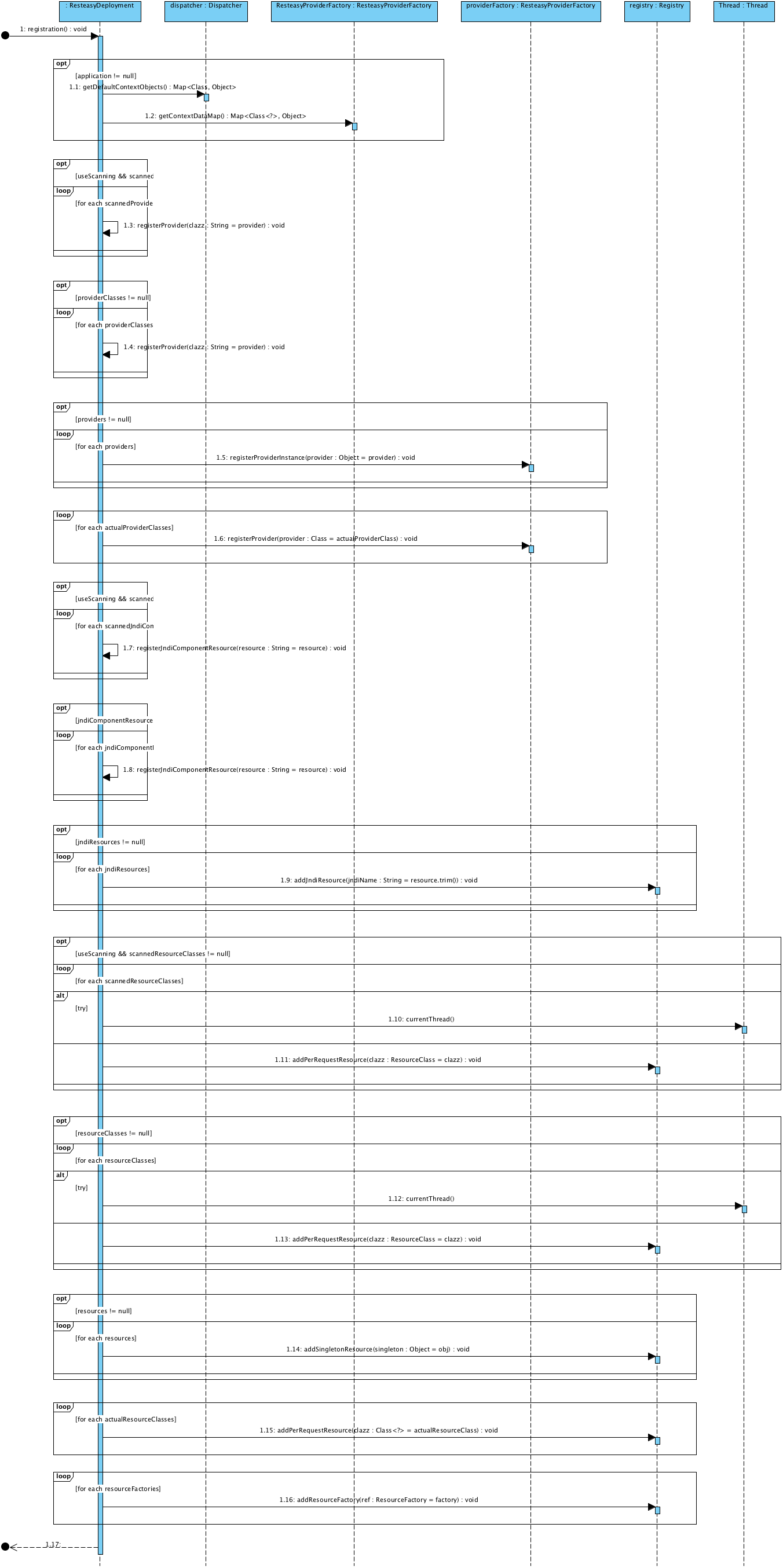
After the ResteasyDeployment.start() is done, the provider factory and the registry is prepared to use for processing requests. Now let’s check the dispatchers. The Dispatcher interface is the runtime entry of the RESTEasy container. If you check the ResteasyHttpHandler2, then you can see how does it handles the incoming request in its handle method:

As the screenshot shown above, the dispatcher.invoke() method is the entry of whole processing work. The ResteasyHttpHandler class is the request handler of resteasy-jdk-http embedded server which uses Sun JDK HTTP Server as the webserver. Here is the class diagram show the dispatcher classes and the relationship with Registry and ResteasyProviderFactory:
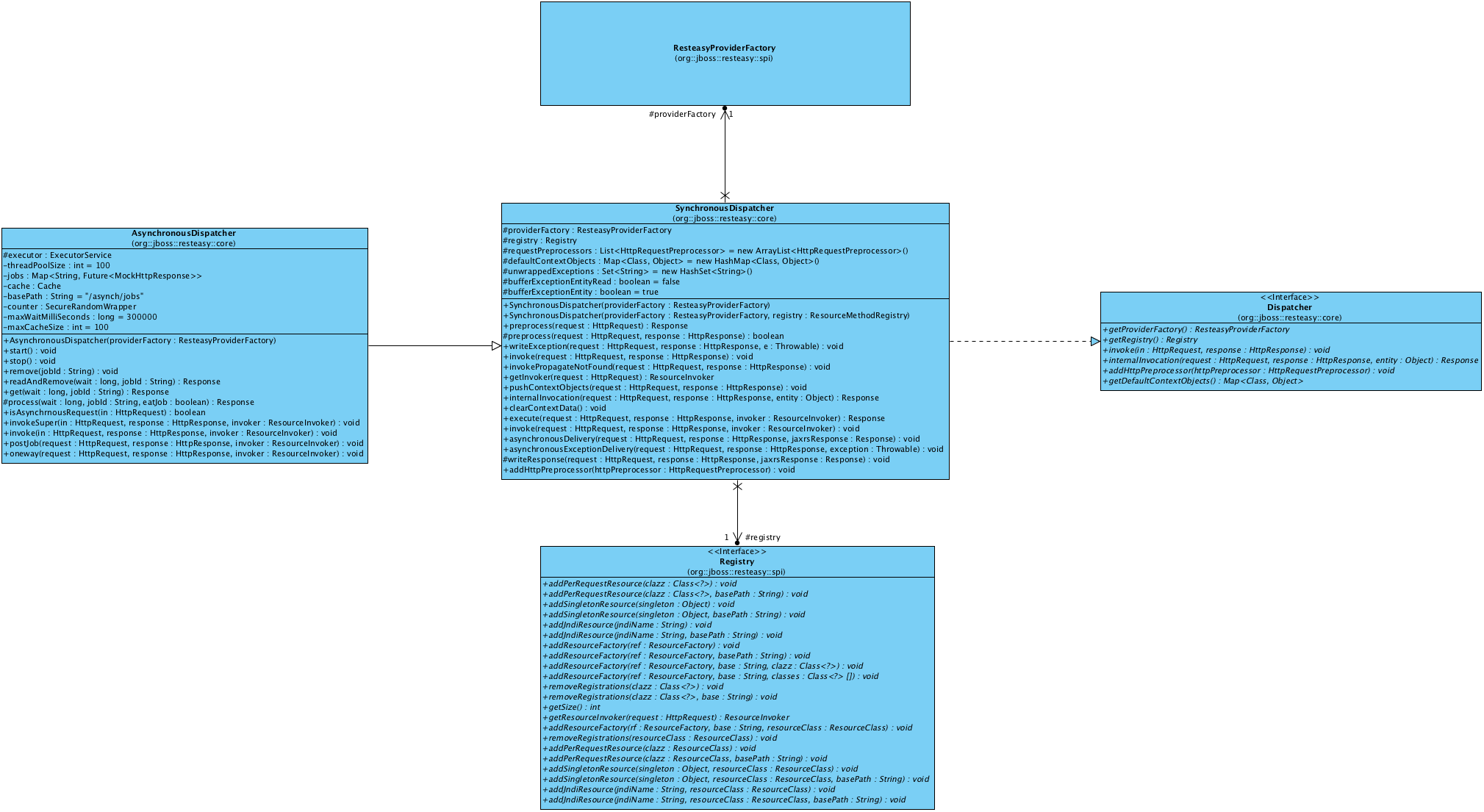
Please check there are two kinds of dispatchers: one is synchronous and the other is asynchronous. You can guess the AsynchronousDispatcher is to support some asynchronous requests, and the SynchronousDispatcher is used for traditional request handling. We won’t dive into the details of two kinds of dispatchers in this article. Now let’s see sequence diagram of the SynchronousDispatcher.invoke() method:
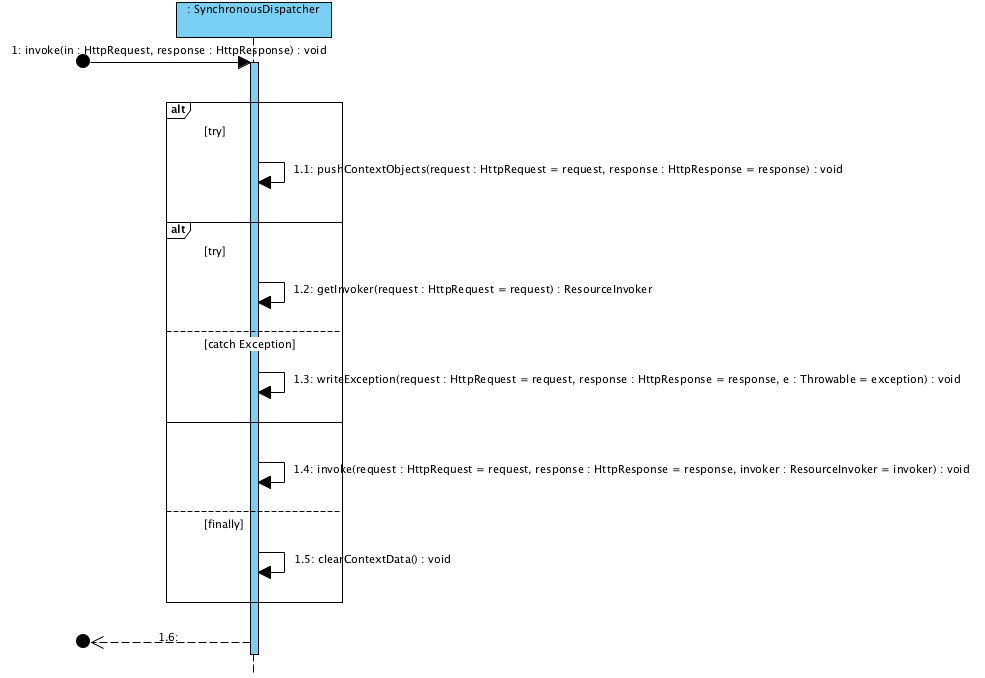
From the above diagram we can see the main logic is to get the invoker and call the invoke() method of the invoker. Here is the sequence diagram of the SynchronousDispatcher.getInvoker() method:

From the above diagram we can see the main logic is registry.getResourceInvoker(request). We have discussed the details about RESTEasy implementation on URL matching process in [sec3.7].
After getting the invoker, the dispatcher will run invoker.invoke() method to call the real method matches the incoming request. The discussion on invoker is out of the scope in this article, and I’ll write another article to introduce the design on invoker.